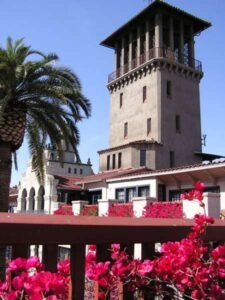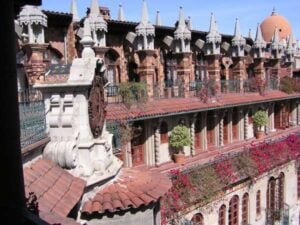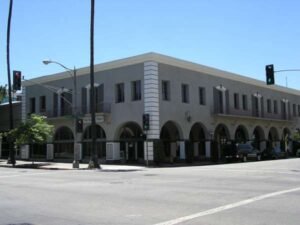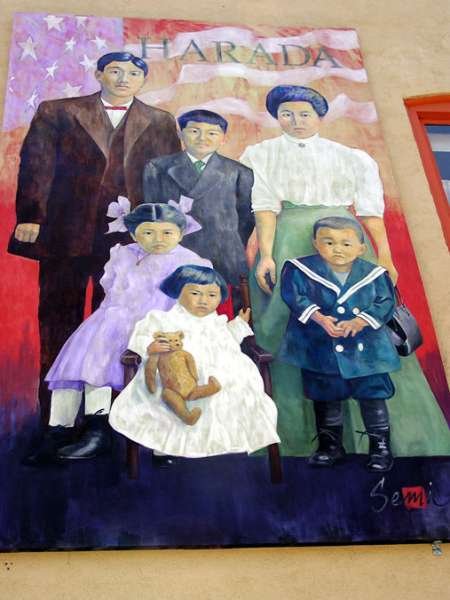History vs. growth
The old debate — new vs. old, dynamic vs. stagnant, growth vs. preservation, etc., etc. Such is always a tricky and dicey situation for any town or city. And, of course, everything is indeed subjective and relative. In other words, what exactly makes a structure “old,” “historic,” and/or “culturally significant”?

In Riverside’s case, the city has — for the most part — done an above-average job at protecting and preserving local historic and/or cultural landmarks. Such preservation is what has helped distinguish Riverside from other Southern California cities, many of which simply do not have the rich, historical character as does Riverside. The Mission Inn is a prime example.
Almost lost to the wrecking-ball in the mid-1970s, the Mission Inn today is one of the crown jewels of Southern California. After nearly a half century of modest deterioration, the historic hotel had indeed seen better days. What once was an immaculate and extraordinary hotel that attracted many of Hollywood’s top stars, had become relegated to providing assorted — albeit unique — apartments, some of which housed students from nearby UC Riverside.
By the time the City of Riverside stepped in to buy the once grand hotel in 1976, the structure had spent the previous 20 years in neglect, primarily at the hands of Ben Swig (of San Francisco’s famed ‘Fairmount Hotel’). Swig purchased the hotel in 1956 following the deaths of Allis and DeWitt Hutchings, daughter and son-in-law of Inn-builder Frank Miller, who themselves had taken over upon the death of Miller in 1935.

Unfortunately, the Swig era — and subsequent “era of many owners” during the early 1970s (which included ownership by Urban Housing Company of Los Angeles) — failed to do little more than hasten the Inn’s deterioration. It finally became evident that if the landmark was to once again prosper, the City of Riverside would have to step in, which it did when it purchased the flagging hotel for $2.4M in 1976 from Connecticut General Life Insurance.
From 1976 until 1985, the City of Riverside — with the help of generous and highly devoted volunteers — infused just enough capital and sweat equity to keep the structure from falling into total disrepair. But, the city desperately needed help.

In steps New York’s Carley Capital Group, which saw a grand opportunity for a once grand hotel. However, after purchasing the Inn in 1985 from Riverside for $3M and investing over $30M into the aging structure (earthquake retrofitting, et al), Carley Capital went belly-up upon the Inn’s rechristening as Omni Mission Inn in December 1988. The property eventually transferred to principal creditor, Chemical Bank of New York, and the Omni Mission Inn was but a brief memory.
After the infusion of a bit more capital by Chemical Bank and nearly four years waiting for a savior, the Inn was purchased by local Riverside businessman Duane Roberts in December 1992. The price was estimated at $15M — quite a bargain considering the amount of capital infused for complete renovation.

Thus, on Dec. 30th, 1992 the “new” Mission Inn re-opened to rave reviews and brought this once proud city back into the forefront of historic downtowns within Southern California.
Today, just one-block over from the Mission Inn, stands another significant “old” building, which itself is being threatened by the wrecking-ball:
The Riverside City Council is set to decide Tuesday whether to push on with a six-story office tower that city officials say is crucial to the downtown area’s growth or opt for a smaller project that would save several historic structures.
Riverside Press-Enterprise – May 22, 2004
Let it be said, the building in question — which is actually among a group of adjacent buildings under threat — is indeed no Mission Inn. However, it still has very significant historical importance for the city and the region (even the state/nation).

The small, somewhat unassuming, two-story building located mid-block at 3643 University Avenue between Orange and Main streets and dating from 1886, once housed a restaurant run by Riverside’s Harada family, prominent Japanese-Americans who were among the first to successfully challenge California’s Alien Land Law in 1918 (a law finally overturned in 1950). The 1918 event was significant enough that the family’s house (aka Harada House) at the center of the Alien Land Law case, is the only other National Historic Landmark designated in Riverside besides the Mission Inn itself. Thus, losing the building that once was the family’s Washington Restaurant would be a significant historic and cultural loss due to its own historical context and connection to the Harada House located on Lemon Street. Such is an example of preservation/landmark status via historical context versus architectural attributes.

“I think the history is extremely important,” (building owner Andy) Melendrez said before the vote (by the Cultural Heritage Board recommending city historic landmark status). The building “tells a story about Riverside and its development over the years.”
Riverside Press-Enterprise – May 21, 2004
But there are other reasons the city should tread gently in these parts. The eastern corner of the property in question is part of one of the last areas in the downtown area wherein four buildings (including the historic 1908 Bonnett, 1928 Arcade, and El Cabrillo buildings) front all four corners of the intersection (Orange at University) — a unique trait not found much these days within the handful of downtowns in Inland Southern California. Without a doubt, the corner in question for tear-down is the least attractive of the four corner buildings. But indeed, this intersection has both character and potential (a mini Gaslamp Corner?) — something that is certain to be lost with its replacement via a shiny new office tower. (Just to be clear, neither the Cabrillo, Bonnett, nor Arcade buildings — standing on 3 of the 4 corners — are threatened by the proposed office building.)

Hmm…the office tower. Ok, we admit it — we love shiny new office towers about as much as we do old, historic structures. Progress indeed is important (rather than outright stagnation). However, growing up in a city that has significant historic treasures (surrounded by a region of essentially characterless suburban homogenization), we also know — and highly regard — the value of historic treasures. So, we like to promote both progress and preservation (they’re not always mutually exclusive).
Like most cities around the country, Riverside suffered a severe office building bust during the 1990s. Unfortunately, 4 years into the new millennium and the city is still dormant in this regards. In fact, the last significant office “tower” — which, in Riverside is a relative term — was built well over 10 years ago. So, almost any new office tower proposed these days is practically enticing — but at the cost of a historic treasure that will be lost forever?
In this case, our answer would be NO. It’s simply not worth it.

Thus, a possible compromise: build on a smaller footprint twice as high.
Such a compromise, a common practice seen in many cities across the U.S., could potentially save the historic buildings on the southern and eastern portion of the project area while still giving the office tower direct access to the Main Street pedestrian mall on the western portion of the site. And, although indeed a more expensive way of building, such could very well give downtown Riverside a unique — maybe even signature — office tower via the restrictions found in the tighter lot.
So, it is our hope that both the city and Best Best & Krieger — the proposed building’s primary tenant and the Inland area’s largest law firm and long-time Riverside corporate citizen — see the civic benefit of restructuring the proposed office tower in a way in which all parties come out a winner (even if it takes a bit of redevelopment funds).

Just like the Mission Inn.
(2024 Update: Due in part to delays, the primary tenant — Best Best & Krieger — pulled out of the project in November 2004 (PE-20041112), which essentially ended the office tower. Since 2018, the Imperial Hardware Lofts mixed-use development has taken up a large portion of the former project site. And as of 2024, the circa 1886 building at 3643 University Avenue — that once housed the Harada family’s Washington Restaurant — remains. In the end, all worked out for the better, including the saving of the Westbrook’s 1935 Art Deco-style facade, which was incorporated into Imperial Hardware Lofts.)
Related
- Riverside Press-Enterprise – Building’s future cloudy (May 21) | Office plan pits history vs. growth (May 22)
- Museum of Riverside — Harada House
- Mission Inn
Sources: Friends of the Mission Inn: “Historic Mission Inn” (1998; 2002 edition), Riverside Press-Enterprise (PE-20040521, PE-20040522, PE-20041112); NOTE: Published dates for some online versions of newspaper articles cited may not match their archival source date.
2024 PAGE UPDATE: Added 2024 update; added 2012 photo of 3643 University Avenue; added newspaper citation/insert; added minor context/clarification; added Museum of Riverside photo for Washington Restaurant; removed outdated links to newspaper article and photo gallery; updated Related content with link to Museum of Riverside – Harada House.

